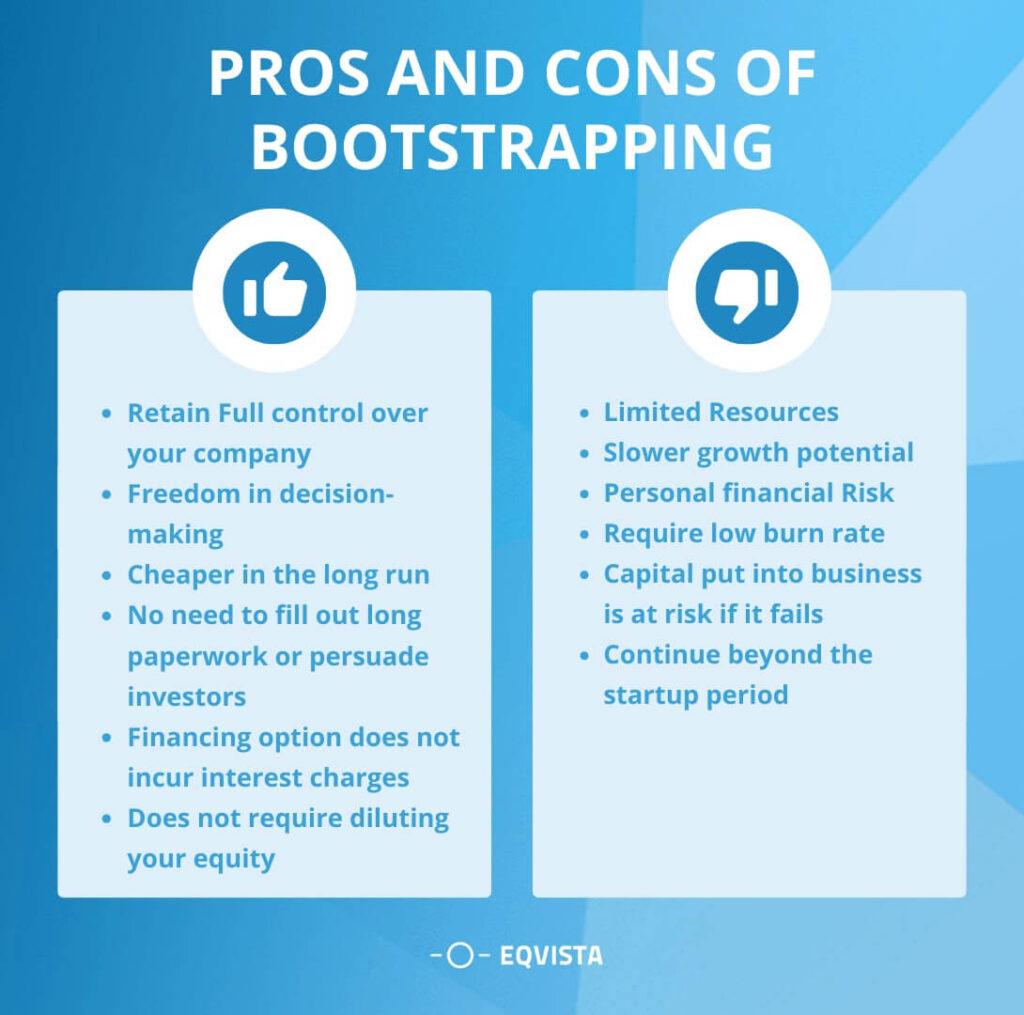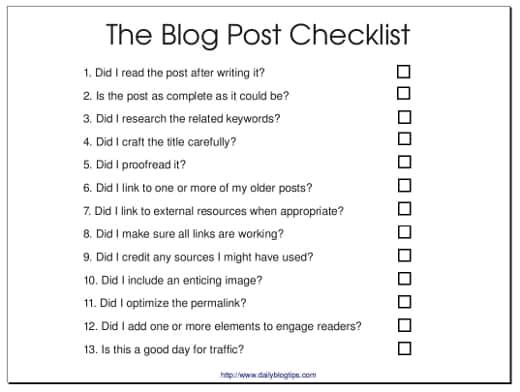
In the ever-evolving landscape of digital content, the way we approach blogging is constantly changing. If you’ve ever scoured the internet for the perfect blog post checklist, you might have noticed that many of them feel a bit… stale. Sure, they promise to guide you through the essential steps of crafting a great post, but let’s be honest—most of these lists haven’t been updated to reflect the latest trends, algorithms, and reader preferences. As a result, relying on outdated checklists can leave your content feeling flat and uninspired. So, what’s a savvy blogger to do? In this article, we’ll explore the reasons why most blog post checklists miss the mark and, more importantly, share fresh, actionable strategies that will elevate your writing and engage your audience like never before. Let’s dive in and discover how to create compelling content that truly resonates!
Understanding the Evolution of Blogging Standards
Over the years, blogging standards have undergone a significant transformation driven by changes in technology, audience expectations, and SEO practices. What was once considered best practice may now feel stale or ineffective. As a result, many checklists that once guided bloggers have become relics of a bygone era.
One major shift has been the move from keyword stuffing to a more nuanced approach to SEO. In the past, blogs focused heavily on incorporating specific keywords multiple times throughout the post. Today, search engines prioritize quality content that addresses user intent. Therefore, instead of fixating on keyword density, bloggers should aim to create comprehensive, value-driven posts that naturally incorporate relevant terms.
Another evolution in blogging standards relates to formatting and readability. Bullet points and subheadings are no longer optional—they are essential. Readers crave easily digestible content, and clear formatting can significantly enhance user experience. By utilizing short paragraphs, lists, and visual elements, you can keep your audience engaged and reduce bounce rates.
Additionally, the rise of multimedia content has fundamentally changed how we approach blogging. Incorporating images, videos, and infographics not only enriches the content but also caters to varied learning styles. Blogs that embrace a multi-dimensional approach are more likely to resonate with a broader audience.
| Old Blogging Standards | Modern Blogging Practices |
|---|---|
| Keyword stuffing | Natural language and user intent |
| Long, dense paragraphs | Short paragraphs and bullet points |
| Static text posts | Engaging multimedia content |
Moreover, engagement metrics have taken center stage. It’s no longer sufficient to simply attract visitors; you must also keep them on your page and encourage interactions. This has recast the importance of calls-to-action, comment sections, and social sharing buttons. Building a community around your blog can greatly enhance its value.
the focus on authenticity and transparency has never been more prominent. Bloggers who share their personal experiences, insights, and even failures are more likely to forge genuine connections with their audience. Readers appreciate honesty, and it helps to establish trust, which can ultimately lead to loyalty.
as the blogging landscape continues to evolve, it’s crucial to adapt your practices to stay relevant. Ditching outdated checklists in favor of a focus on quality, engagement, and authenticity can set your blog apart in an increasingly crowded market.

The Flaws in Traditional Blog Post Checklists
For years, bloggers have relied on traditional checklists to guide their writing process. However, many of these checklists are based on outdated practices that no longer reflect the evolving landscape of digital content. The reliance on rigid structures can stifle creativity and lead to cookie-cutter posts that fail to engage readers.
One major flaw in these checklists is the focus on SEO tactics that prioritize keyword stuffing over authentic storytelling. While optimization is important, an overemphasis on specific keywords can detract from the quality of the content. Instead of forcing keywords into every sentence, aim for a natural flow that resonates with your audience. Here are some essential components to consider:
- Audience Engagement: Create content that speaks directly to your audience’s interests and needs, rather than merely ticking boxes.
- Value Addition: Focus on providing genuine value, whether through insights, solutions, or entertainment.
- Visual Appeal: Incorporate images, infographics, and videos that complement your written content, breaking up text-heavy sections.
Another limitation of traditional checklists is their linear approach to content creation. Many checklists suggest a step-by-step process that can feel restrictive. Blogging is often an iterative process that thrives on experimentation and spontaneity. Instead of following a rigid format, consider adopting a more fluid approach:
- Embrace Flexibility: Allow your writing process to evolve. Sometimes, the best ideas come from unexpected places.
- Iterate and Improve: Publish drafts and refine them based on reader feedback and engagement metrics.
- Collaborate: Partner with other content creators for fresh perspectives and ideas.
Lastly, traditional checklists often neglect the importance of analytics and performance tracking. In today’s digital world, understanding how your content performs is crucial. By focusing on metrics, you can tailor your content strategies to better meet reader preferences. Consider the following:
| Metric | Importance |
|---|---|
| Page Views | Indicates overall interest and reach. |
| Engagement Rate | Shows how well your content resonates with readers. |
| Bounce Rate | Reveals if visitors are finding value or leaving quickly. |
By moving away from stale checklists and embracing a more adaptive, audience-centric approach, bloggers can create content that not only stands out but also provides genuine value. The landscape of blogging is changing rapidly, and it’s essential to keep pace with these shifts to connect with readers effectively.

Why a One-Size-Fits-All Approach No Longer Works
In today’s digital landscape, the notion that a single checklist can cater to the diverse needs of every blog post is increasingly unrealistic. Readers have evolved, and so have their expectations. A generic approach often leads to bland content that fails to engage or resonate. Here’s why tailoring your strategies is essential:
- Diverse Audiences: Readers come from varied backgrounds, each bringing unique preferences and interests. What works for one demographic may not work for another.
- Content Saturation: With millions of blogs vying for attention, standing out requires a personalized touch rather than a cookie-cutter method.
- Platform Variability: Different blogging platforms have their own best practices that may not align with a one-size-fits-all checklist.
- Changing Algorithms: Search engine algorithms continually evolve, favoring fresh, relevant, and engaging content tailored to specific audiences over generic posts.
Moreover, the rise of multimedia content demands a shift from traditional text-heavy approaches. Incorporating video, infographics, and interactive elements can significantly enhance engagement, but these additions require a thoughtful strategy that a standard checklist often overlooks.
Consider that SEO practices are not static. They vary according to trends and user behavior. For example, optimizing for voice search or mobile devices necessitates different tactics than those used for conventional desktop searches. This complexity means that a one-size-fits-all approach can easily lead to missed opportunities.
| Checklist Item | Relevance | Personalization Opportunity |
|---|---|---|
| Keyword Research | Only relevant to specific niches | Tailor keywords to audience segments |
| Headlines | Generic headlines often underperform | Create compelling, niche-specific headlines |
| Length of Posts | Varies by audience preference | Test different lengths for engagement |
Ultimately, embracing a more adaptive approach allows bloggers to experiment with various formats, lengths, and styles. This flexibility not only enhances creativity but also enables bloggers to respond to audience feedback and trends dynamically. Instead of relying on outdated checklists, consider cultivating a mindset focused on innovation and iteration.
In lieu of a rigid checklist, think of developing a content strategy framework that allows for customization based on real-time data and insights. This could include analyzing audience engagement metrics, keeping tabs on competitor strategies, and remaining open to adjusting content types based on performance.
Identifying Your Audiences Changing Needs
Understanding the evolving needs of your audience is not just a task; it’s an ongoing journey. In a rapidly changing digital landscape, your readers’ preferences can shift overnight. Therefore, keeping your content relevant and engaging requires a proactive approach to audience insights.
Start by conducting regular surveys. Simple questions can reveal a wealth of information about what your audience is currently interested in. Consider using tools like Google Forms or Typeform to create a user-friendly survey. Ask about:
- Topics they find most engaging
- Formats they prefer (videos, infographics, articles)
- Challenges they are currently facing
Another effective method is to analyze your existing content. Look at which posts generate the most traffic, engagement, and shares. This data can offer insights into what your audience craves. Tools like Google Analytics or social media insights can help you identify trends. Focus on:
- Content types that perform best
- Audience demographics for high-performing content
Engagement on social media platforms is another goldmine for understanding your audience’s needs. Monitor comments, shares, and likes. The conversations happening around your posts can provide direct feedback. You might notice:
- Questions that pop up frequently
- Topics that spark debate or interest
- Feedback on your content style
Additionally, keep an eye on industry trends and competitor strategies. Sometimes, what works for others can spark new ideas for your content. Create a simple table to track these aspects:
| Competitor | Content Type | Engagement Level | Trending Topics |
|---|---|---|---|
| Competitor A | Videos | High | Social Media Marketing |
| Competitor B | Blog Posts | Medium | Email Marketing Tips |
| Competitor C | Podcasts | Low | SEO Strategies |
Lastly, don’t underestimate the power of community feedback. Join forums or groups related to your niche. Engage in discussions and ask for input on your content direction. This can not only provide fresh ideas but also foster a sense of community among your audience.
By implementing these strategies, you can remain attuned to your audience’s needs, keeping your content dynamic and relevant. Remember, the key is not just to meet their needs but to anticipate them. Stay agile and be ready to pivot your content strategy as your audience evolves.
Embracing SEO Best Practices Beyond Keyword Stuffing
While keyword optimization has long been a staple of SEO strategies, relying solely on keyword stuffing is a surefire way to undermine your content’s quality and effectiveness. Instead, think of SEO as a comprehensive ecosystem where various factors work together to enhance visibility and user engagement. So, how can you elevate your SEO game beyond basic keyword tactics? Here are some best practices to consider:
- Focus on User Intent: Understand what your audience is searching for and tailor your content accordingly. This means creating content that answers questions, provides solutions, or entertains based on the intent behind the search.
- Optimize for Featured Snippets: Craft your content to aim for Google’s featured snippets. This can involve using lists, tables, or direct answers to common questions that give you the chance to appear at the top of the search results.
- Prioritize Content Structure: Use headers (H1, H2, H3) effectively to break down your content into digestible sections. This not only enhances readability but also helps search engines understand the hierarchy of your information.
- Utilize Internal Linking: Strengthen your website’s architecture by linking to other relevant posts. This not only keeps visitors on your site longer but also improves the overall SEO health of your content.
- Enhance Page Load Speed: Fast-loading pages are crucial. Optimize images, leverage browser caching, and minimize JavaScript to ensure your site runs smoothly. A better user experience often translates to favorable rankings.
Incorporating multimedia elements such as images, videos, and infographics can also significantly enhance your content’s appeal. Not only do these elements make your posts visually engaging, but they can also improve dwell time—an important metric for search engines. When adding multimedia, remember to include alt texts for images since this contributes to SEO and helps visually impaired users understand your content.
Another aspect to consider is the importance of mobile optimization. With the majority of users accessing content from mobile devices, a responsive design is essential. Google prioritizes mobile-friendly sites in its ranking algorithms, so ensure that your site looks great and functions well on all devices.
| SEO Elements | Importance | Tip |
|---|---|---|
| User Intent | High | Research keywords that reflect user queries. |
| Content Structure | Medium | Use headers to guide readers. |
| Page Load Speed | High | Regularly test and optimize your site’s speed. |
| Mobile Optimization | Critical | Test your site on various devices. |
remember that SEO is an ongoing process. Regularly update your content to keep it relevant and consider the evolving nature of search algorithms. By embracing a holistic approach to SEO, you not only improve your chances of ranking well but also create a better experience for your readers. your content should serve a purpose, resonate with your audience, and bring value to those who engage with it.
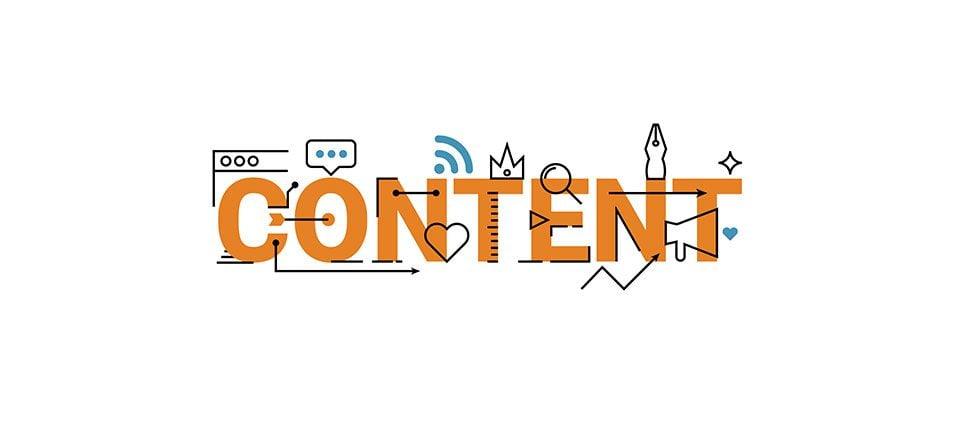
The Importance of Content Quality Over Quantity
In the ever-evolving landscape of digital content, the emphasis on quality over sheer volume has never been more critical. With countless blogs flooding the internet, readers are no longer satisfied with just another post filling up their feed. They crave insights, depth, and value, which means it’s essential to focus on creating high-quality content that resonates with your audience.
Consider the following key aspects of why content quality should take precedence:
- Engagement: High-quality content holds attention. It invites readers to interact, share, and return for more. When your content is insightful and engaging, it cultivates a loyal audience.
- SEO Benefits: Search engines are increasingly prioritizing quality in their algorithms. Well-researched, informative content often ranks higher, attracting organic traffic more effectively than a high volume of mediocre posts.
- Brand Authority: Consistently delivering valuable content positions you as an authority in your niche. This trust can convert readers into customers and advocates for your brand.
- Less is More: A smaller quantity of well-crafted posts can often achieve better results than a large number of hastily produced articles. This allows for more focus on strategy and refinement.
Moreover, creating high-quality content doesn’t just benefit your audience; it also streamlines your content creation process. Instead of throwing together posts to meet a quota, focus on developing a few standout pieces that embody your brand’s voice and mission. This might involve:
- Conducting thorough research to ensure accuracy and depth.
- Incorporating visuals and multimedia to enrich the reader’s experience.
- Utilizing storytelling techniques to make your points more relatable and memorable.
To illustrate the impact of quality versus quantity, consider the following table:
| Content Strategy | Quality | Quantity |
|---|---|---|
| Engagement Level | High | Low |
| SEO Ranking | Improved | Diminished |
| Brand Trust | Strengthened | Weakened |
| Reader Retention | High | Low |
while it might seem tempting to churn out as many posts as possible to keep your blog active and relevant, the reality is that focusing on creating fewer, higher-quality pieces will yield better long-term results. Your audience deserves well-crafted content that informs and engages, and your brand will benefit from the trust and authority that come with it.
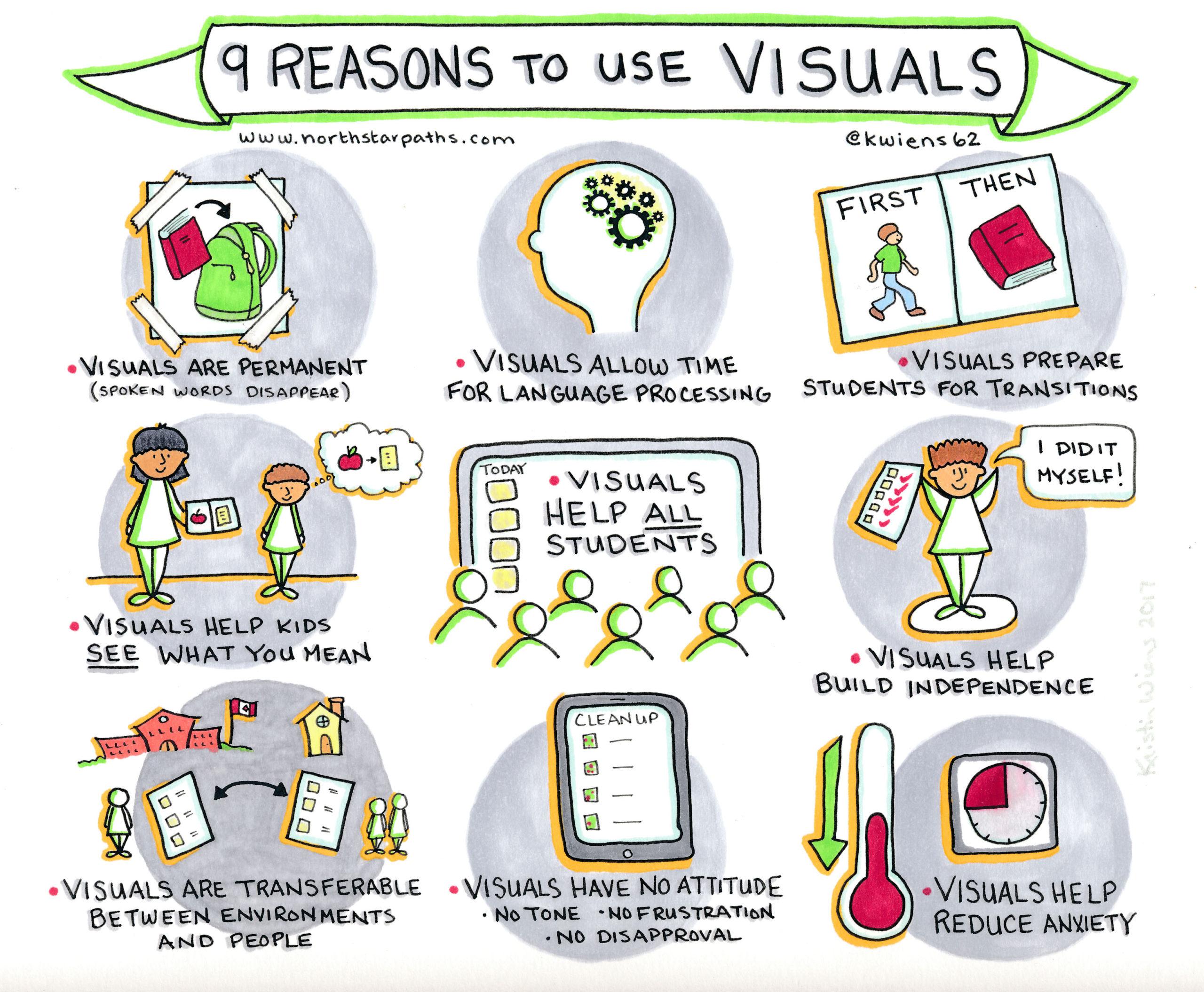
How to Integrate Visuals for Maximum Engagement
Visual elements are no longer optional in blog posts; they are essential. To truly grab your readers’ attention, you need to incorporate visuals that resonate with your content and enhance engagement. Here’s how to seamlessly integrate them into your writing.
First and foremost, choose the right type of visual for your message. Depending on your content, different visuals may serve better:
- Images: Use high-quality images that reflect the tone of your blog. Authentic images can make your content more relatable.
- Infographics: These are perfect for distilling complex information into digestible visuals, making it easier for your audience to grasp key points.
- Videos: Short clips can enhance your narrative, providing an engaging way to present information or demonstrate a process.
- Charts and Graphs: Use these to visualize data, making it more impactful and easier to understand.
Next, consider placement and context. A well-placed visual not only attracts attention but also enhances comprehension. Here are some strategies:
- Insert visuals near relevant text to reinforce key messages.
- Use captions to explain the significance of the visuals, guiding your readers on how to interpret them.
- Break up large blocks of text with visuals to maintain reader interest and improve readability.
Additionally, don’t overlook the importance of consistency in style. Maintaining a cohesive visual theme across your blog helps reinforce your brand identity. This includes using:
- A consistent color palette that aligns with your brand.
- Similar fonts and styles to create a unified look.
- Regular image sizes to ensure a clean layout.
Lastly, always prioritize accessibility. Ensure your visuals are inclusive by considering the following:
- Use alt text descriptions for images to aid visually impaired readers.
- Choose colors that are distinguishable for those with color vision deficiencies.
- Offer transcripts for videos to cater to different learning preferences.
By integrating visuals thoughtfully, you not only enhance the aesthetic appeal of your blog but also improve user experience and engagement. A well-designed visual strategy can transform an ordinary post into an interactive experience that keeps readers coming back for more.

Leveraging Data Analytics for Tailored Content
In a world overflowing with information, the key to standing out lies in how effectively we can engage our audience. Leveraging data analytics allows us to craft content that isn’t just generic but resonates deeply with specific reader segments. By understanding *who* our audience is and *what* they value, we can create tailored content that drives engagement and fosters loyalty.
One powerful method to harness the potential of data analytics is by exploring audience behavior patterns. Analyzing what topics your audience engages with most can provide invaluable insights. Consider the following:
- Page views: Which posts are attracting the most traffic?
- Time on page: Are readers spending significant time on specific articles?
- Social shares: What content gets shared the most on social platforms?
By diving deep into these metrics, you can tailor your content strategy to focus on high-performing topics. This not only enhances your blog’s relevance but also boosts your search engine rankings, as more visitors translate to higher authority.
Another aspect to consider is audience segmentation. Data analytics can help you identify different segments within your audience based on demographics, interests, and engagement levels. Crafting content that speaks directly to these segments can dramatically improve your blog’s impact. For instance:
| Audience Segment | Preferred Content Type | Recommended Topics |
|---|---|---|
| Young Professionals | How-to Guides | Career Development, Work-Life Balance |
| Parents | Listicles | Parenting Tips, Family Activities |
| Fitness Enthusiasts | Video Content | Workout Routines, Nutrition Advice |
By providing content that aligns with the preferences of each segment, you not only enhance engagement but also strengthen your brand’s authority within those niches. This targeted approach fosters a sense of community and keeps your audience coming back for more.
Furthermore, utilizing tools for real-time analytics empowers you to adjust your content strategy on the fly. If you notice a spike in interest around a particular topic, you can quickly pivot your upcoming content calendar to capitalize on that trend. This agility ensures your blog remains relevant and timely.
Ultimately, data analytics serves as a compass, guiding your content creation efforts toward the most fruitful paths. By embracing this approach, you can not only revitalize your blog but also create a more meaningful connection with your audience. Tailored content isn’t just about meeting expectations; it’s about exceeding them, leading to a loyal readership that will champion your brand.

Creating Engaging Introductions That Hook Readers
Have you ever landed on a blog post and immediately felt your interest wane? Chances are, it was the introduction that missed the mark. Crafting an introduction that captivates readers is essential, especially in a world brimming with distractions. Think of your introduction as the shop window of your blog; it needs to be enticing enough to draw people inside.
Start with a compelling question or a striking statement that resonates with your audience’s pain points or desires. For instance, instead of saying, “Many bloggers use checklists,” consider something like, “Is your blog feeling stale despite following every checklist in the book?” This approach not only piques curiosity but also makes readers feel seen and understood.
Another effective strategy is to tell a story. Humans are wired for narratives, and a brief anecdote can create an emotional connection. Share a personal experience about how you struggled with outdated blogging strategies and the eventual revelation that transformed your approach. Readers are more likely to engage when they feel a personal connection to the content.
Consider using provocative statistics or surprising facts that challenge conventional wisdom. You could mention something like, “Did you know that 80% of blog posts are never read beyond the headline?” This kind of data can serve as a wake-up call, encouraging readers to reconsider their blogging tactics. These statistics not only grab attention but also set the stage for your argument about the inadequacies of traditional checklists.
Visual elements can also enhance your introduction. For example, incorporating an eye-catching image or an infographic can draw readers in more effectively than text alone. Pair your visuals with bold statements or intriguing captions to further amplify their impact. Remember, the first impression often relies on what the eye sees before the mind processes the words.
While crafting your introduction, aim to keep it concise yet powerful. Long-winded introductions can lead to disengagement, so aim for clarity and brevity. Use short paragraphs and bullet points to make your introduction more digestible. Consider the following structure:
| Engagement Techniques | Examples |
|---|---|
| Compelling Question | “Is your blog feeling stale despite following every checklist in the book?” |
| Storytelling | Share a personal anecdote about blogging struggles. |
| Provocative Statistics | “80% of blog posts are never read beyond the headline.” |
| Visual Elements | Use images or infographics to enhance engagement. |
Ultimately, the goal is to establish a promise for what’s to come. Make it clear that your content will provide actionable insights, solutions, or fresh perspectives that readers won’t find in outdated checklists. This promise not only keeps readers hooked but also sets a positive tone for the rest of your post.

The Role of Authenticity in Today’s Blogging Landscape
In an era where audiences are bombarded with content from every direction, the demand for authenticity has never been higher. Readers crave connection and relatability, seeking out voices that resonate with their own experiences. This shift in priorities means that traditional blogging checklists—often filled with rigid guidelines and formulaic structures—are losing their effectiveness. Instead of relying on outdated formulas, bloggers must embrace a more genuine approach that fosters real engagement.
Authenticity in blogging isn’t merely a buzzword; it’s a critical element that can set a blog apart in a crowded marketplace. Here’s why embracing authenticity is essential:
- Building Trust: When bloggers share their real thoughts, experiences, and vulnerabilities, they cultivate trust with their audience. This emotional connection encourages readers to return and engage more deeply.
- Encouraging Engagement: Authentic content invites conversation. Readers feel more comfortable sharing their own stories and opinions, creating a community rather than a one-way street.
- Enhancing Brand Identity: A unique voice and perspective help define a blogger’s brand. Authenticity allows bloggers to stand out in a sea of sameness, attracting a loyal following.
As bloggers pivot towards authenticity, it’s important to recognize that this doesn’t mean abandoning quality or structure. Instead, it’s about finding the balance between personal storytelling and informative content. Here’s how to adapt your blogging strategy:
- Share Personal Stories: Incorporate anecdotes that reflect your journey, challenges, and successes. These stories can humanize your brand and create relatability.
- Encourage User-Generated Content: Foster a collaborative spirit by inviting readers to share their thoughts or experiences related to your topics. This not only enriches your content but also builds community.
- Stay True to Your Values: Authenticity shines through when you remain consistent with your beliefs and values. This helps you attract an audience that resonates with your message.
Moreover, consider using a more fluid approach to content creation rather than adhering to strict checklists. The following table outlines modern strategies for blogging that prioritize authenticity:
| Strategy | Description |
|---|---|
| Conversational Tone | Write as if you’re speaking to a friend. This invites readers in and makes your content more engaging. |
| Visual Storytelling | Utilize images and videos that reflect your personality and stories to make your posts more relatable. |
| Interactive Elements | Incorporate polls, quizzes, or comment prompts to encourage reader participation and feedback. |
By prioritizing authenticity and engaging with your audience on a personal level, you can create a blog that not only stands out but also fosters loyalty and trust. In this transformed blogging landscape, it’s the genuine connections that will drive success.
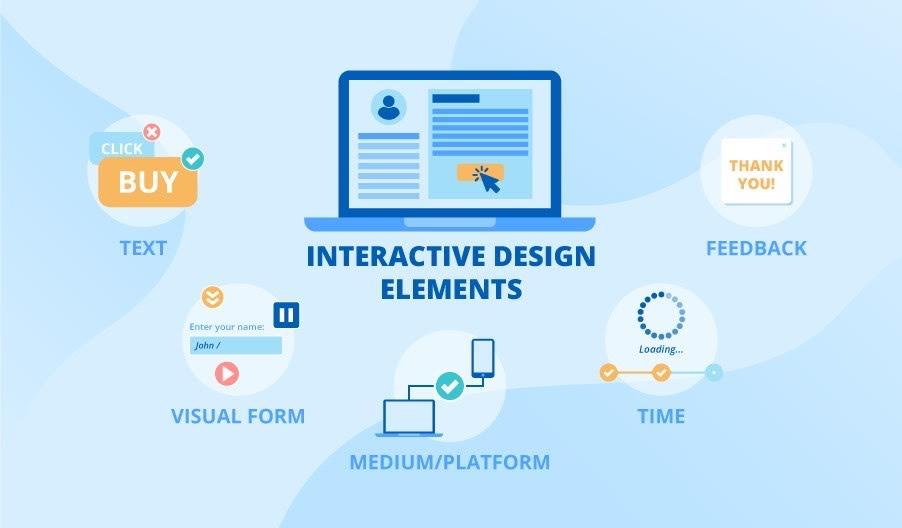
Incorporating Interactive Elements for Enhanced User Experience
In today’s fast-paced digital landscape, simply presenting information isn’t enough to keep readers engaged. To truly captivate your audience, incorporating interactive elements into your blog posts can transform a static reading experience into a dynamic one. Here are some compelling ways to enhance user experience through interactivity:
- Quizzes and Polls: Adding interactive quizzes or polls can not only engage your audience but also provide valuable insights into their preferences. For instance, a quick poll about their favorite content topics can guide your future posts.
- Embedded Multimedia: Use videos, GIFs, or slideshows to break up text and provide varied content consumption methods. These elements keep the audience visually engaged and can often communicate complex ideas more effectively than text alone.
- Comment Section Enhancements: Encourage dialogue by integrating features like upvoting or threading in your comment sections. This fosters community interaction and allows readers to engage more meaningfully with one another.
- Interactive Infographics: Instead of static images, design infographics that allow users to click through different data points or sections. This not only makes the information more digestible but also creates a more memorable experience.
Integrating these elements can be as simple as embedding a poll at the end of your post or linking to a related video. Consider the following table to visualize how different interactive elements correspond to specific user engagement goals:
| Interactive Element | Goal | Example Usage |
|---|---|---|
| Quizzes | Increase Engagement | “What type of content do you prefer?” quiz |
| Videos | Enhance Understanding | Tutorial video demonstrating a concept |
| Polls | Gather Feedback | Poll on future content topics |
| Comment Features | Foster Community | Upvoting popular comments |
By strategically incorporating these interactive elements, you not only provide a richer user experience but also encourage readers to return for more. They’ll feel like active participants rather than passive consumers. This shift can lead to increased time spent on your site, higher return rates, and ultimately, a more loyal readership.
Don’t shy away from experimenting with different formats. Analyze your audience’s reactions and feedback to refine your approach. The digital landscape is constantly evolving, and adapting to these changes through interactivity will keep your content fresh and relevant. Remember, the goal is to create an immersive experience that resonates with your readers and keeps them coming back for more.

Staying Ahead with Trend Awareness and Industry Insights
In the fast-paced world of digital marketing, relying on outdated blog post checklists can stifle creativity and hinder engagement. It’s crucial to stay in tune with the ever-evolving trends and insights within the industry. Adapting to these changes not only enhances your content but also aligns it with your audience’s expectations.
Key trends to be aware of include:
- Voice Search Optimization: With the rise of smart speakers and voice assistants, optimizing for conversational queries is essential.
- Video Content: Short-form videos and live streams are gaining traction, making them indispensable for engaging your audience.
- Personalization: Tailoring content to specific audience segments is more important than ever to boost engagement and conversions.
- Mobile-First Design: As mobile consumption increases, ensuring your content is easily accessible on all devices is vital.
Moreover, keeping an eye on industry insights helps you gauge what resonates with your audience. Utilize tools like Google Trends and social media analytics to understand what topics are currently sparking conversations. These insights can inform your content strategy and give you a competitive edge.
Consider this simple table of content formats that are trending right now:
| Content Format | Engagement Level | Best Use Case |
|---|---|---|
| Listicles | High | Quick tips and resources |
| How-To Guides | Medium | Step-by-step instructions |
| Interviews | High | Expert insights |
| Infographics | Very High | Visual representation of data |
Instead of clinging to a rigid checklist, embrace flexibility in your blogging approach. Experiment with different formats, styles, and tones. Regularly solicit feedback from your audience and adjust your strategy accordingly. This iterative process not only keeps your content fresh but also cements your authority in the industry.
networking with other content creators and industry experts can provide invaluable insights. Attend webinars, join forums, and engage with thought leaders on social media. By fostering these connections, you’ll gain access to the latest trends and best practices that can elevate your blogging game.

Building a Community Around Your Blog for Lasting Impact
Creating a blog is just the first step; the real magic happens when you cultivate a thriving community around it. Building a loyal audience transforms your blog from a solitary venture into a vibrant hub of ideas and interaction. Here’s how you can foster that sense of community for a lasting impact.
Engagement is Key
To truly connect with your readers, you need to engage with them actively. This means:
- Responding to comments promptly.
- Asking open-ended questions to spark discussion.
- Encouraging feedback on your posts.
When readers feel heard and valued, they are more likely to return and participate in future conversations.
Create a Dedicated Space
Consider establishing a community forum or a private Facebook group. This dedicated space allows readers to interact not only with you but also with each other. Here’s how it can benefit your blog:
- Fosters deeper relationships among community members.
- Encourages sharing of personal experiences and insights.
- Generates organic content ideas based on community interactions.
Offer Exclusive Content
Reward your community members with exclusive content, such as:
- Behind-the-scenes insights into your blogging process.
- Special newsletters featuring curated resources.
- Access to webinars or Q&A sessions.
This not only incentivizes membership but also reinforces the value of being part of your community.
Utilize Social Media Wisely
Your blog’s reach can expand exponentially through social media, but it’s essential to use it strategically. Here are a few tips:
- Share blog posts with engaging visuals and catchy captions.
- Participate in relevant conversations within your niche.
- Host live sessions or AMAs to encourage real-time engagement.
By being active and authentic on social platforms, you’ll draw more like-minded individuals to your blog.
Celebrate Milestones Together
Whether it’s reaching a certain number of blog posts or celebrating a community member’s achievement, take the time to celebrate milestones together. This creates a sense of unity and belonging. Consider using a simple table to showcase your community’s achievements:
| Milestone | Date Achieved |
| First 100 Subscribers | January 15, 2023 |
| First Community Meetup | March 10, 2023 |
| 100th Blog Post | April 22, 2023 |
Encourage User-Generated Content
Empower your community members to contribute by encouraging user-generated content. This could be in the form of guest posts, testimonials, or even social media shares about their experiences with your blog. Not only does this diversify your content, but it also makes your readers feel like they’re an integral part of your blog’s journey.
By centering your efforts around community-building, you’re not just creating a blog; you’re establishing a movement. With a loyal audience backing you, the possibilities for growth, influence, and impact are endless.
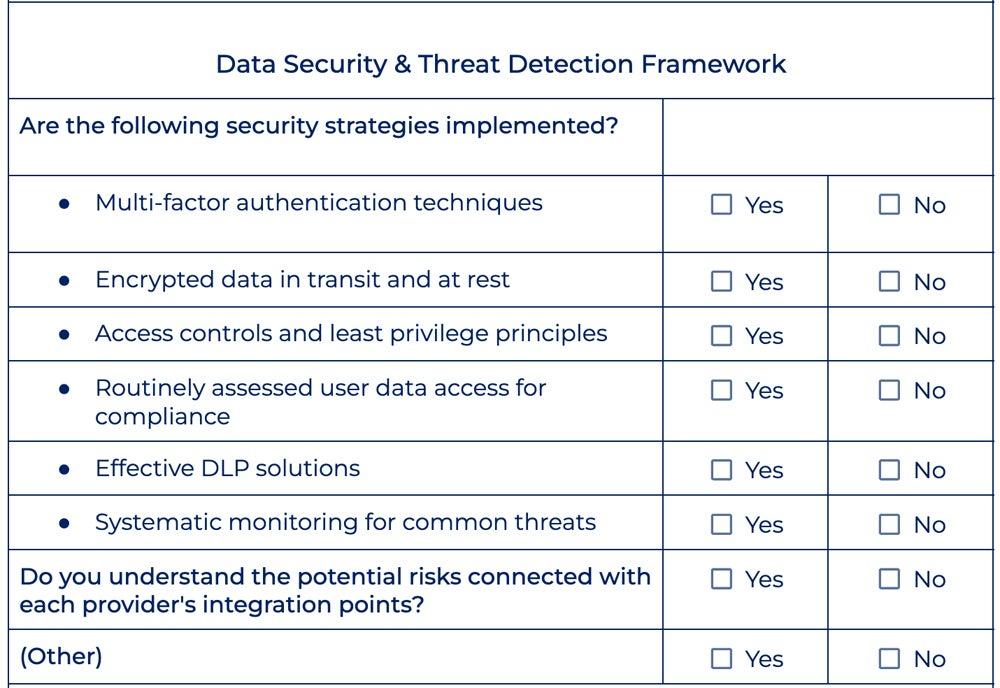
Adapting Your Checklist: A New Framework for Success
In a digital landscape that evolves by the minute, sticking to an outdated checklist can hinder your blog’s potential for success. The traditional checklist often emphasizes a rigid set of tasks that may not align with current SEO practices, audience engagement strategies, or content distribution methods. Instead, a fresh framework is essential for staying relevant and maximizing your blog’s impact.
First and foremost, embrace flexibility. Rather than following a linear approach, consider a dynamic checklist that can adapt based on your audience’s behaviors and preferences. For example, you might start with core elements like topic research and keyword optimization, but allow room for adjustments as you gather insights from analytics.
Next, focus on audience-centric content creation. Instead of merely checking off boxes related to keyword density or meta descriptions, think about what your audience truly wants to know. Incorporate tools like polls or surveys to gather real-time feedback and adjust your content strategy accordingly. This creates a more engaging experience that resonates with readers.
Another crucial aspect is integrating multimedia elements. Today’s readers crave varied content formats, such as videos, infographics, and podcasts. By adding multimedia to your checklist, you not only enhance the reader’s experience but also improve shareability across different platforms. Make sure to include tasks like creating engaging visuals or embedding video content in your revised framework.
Consider revisiting your SEO strategies. With search engine algorithms constantly changing, it’s important to include SEO best practices that are timely and relevant. Focus on voice search optimization, local SEO, and featured snippets. Regularly update your checklist to include new optimization techniques that can boost your blog’s visibility.
| Checklist Item | Old Approach | New Approach |
|---|---|---|
| Keyword Research | Static Keywords | Trending Topics & LSI Keywords |
| Content Format | Text-Only Posts | Mixed Media (Videos, Infographics) |
| SEO Focus | Keyword Density | User Intent & Engagement Metrics |
| Promotion | Single-Channel Promotion | Multi-Platform Strategy |
Another dimension to consider is social media integration. Your checklist should include a strategy for promoting each post across various platforms. Identify which channels yield the best engagement for your target audience and tailor your promotion tactics accordingly. This might involve crafting unique posts for different platforms or using social media analytics to inform future content direction.
Lastly, always include post-publishing analysis in your framework. Once your content is live, the work isn’t done. Set up a system to analyze performance metrics like page views, bounce rates, and social shares. Use this data to refine your approach, ensuring that your checklist evolves as you learn more about what works best for your audience.
Frequently Asked Questions (FAQ)
Q&A: Why Most Blog Post Checklists Are Outdated (And What To Do Instead)
Q1: What do you mean when you say most blog post checklists are outdated?
A1: Great question! Many existing blog post checklists were created when SEO and content marketing looked very different. They often focus on old-school tactics, like keyword stuffing and rigid formatting, which can actually harm your post’s performance today. The digital landscape is constantly evolving, so relying on outdated guidelines can hinder your ability to connect with your audience and rank well on search engines.
Q2: Can you give an example of an outdated checklist item?
A2: Absolutely! One common item you might see is the insistence on using a specific keyword density—like aiming for 2% of your text to be a target keyword. This approach is no longer effective. Search engines have become much smarter; they now prioritize natural language and context over keyword frequency. Instead, focus on creating valuable content that answers your readers’ questions.
Q3: What should bloggers focus on instead of these outdated practices?
A3: Instead of rigid checklists, bloggers should prioritize a few key areas: understanding your audience’s needs, crafting compelling narratives, and optimizing for user experience. Start by researching what your audience truly wants to know and create content that addresses those gaps. It’s all about engaging your readers and providing them with genuine value.
Q4: What about SEO? How can we approach that without outdated tactics?
A4: Modern SEO is more about relevance and user intent than it is about keyword tricks. Use tools like Google Search Console and analytics to understand what your audience is searching for. Optimize your content for featured snippets, answer questions directly, and utilize internal linking effectively. And remember, creating high-quality, shareable content is the best way to organically boost your SEO.
Q5: Any tips on structuring a blog post in today’s environment?
A5: Definitely! Start with a catchy title that piques curiosity. Use engaging introductions that hook your readers. Break your content into bite-sized sections with headers, bullet points, and visuals to enhance readability. And don’t forget to include a strong conclusion that encourages engagement—whether that’s comments, shares, or email sign-ups.
Q6: How can I ensure my blog post stays relevant over time?
A6: Regularly update your content to keep it fresh and relevant. Set a schedule to revisit older posts, refresh outdated information, and optimize for current trends and algorithms. You’ll not only improve your SEO but also show your readers that you’re committed to providing the best and most accurate information.
Q7: what’s the best takeaway for bloggers looking to update their approach?
A7: Toss out the outdated checklists and embrace a more flexible, audience-focused strategy. Understand your readers, create valuable content, and adapt to the ever-changing digital landscape. It’s all about being authentic, relevant, and engaging—those are the real keys to a successful blog today!
In Summary
As we wrap up our exploration of why most blog post checklists are outdated, it’s clear that sticking to the conventional may not yield the results you’re looking for. The blogging landscape is constantly evolving, and so should your approach. Instead of relying on old formulas, embrace the flexibility of creativity and relevance.
Remember, your audience is diverse and ever-changing, and they deserve content that resonates with them today—not content that worked yesterday. So, ditch those tired checklists and craft a strategy that prioritizes authenticity, engagement, and value.
Consider experimenting with new formats, incorporating multimedia elements, or even breaking the mold of traditional structure. Your unique voice and vision are what will truly set your blog apart in a crowded digital space.
So, go ahead—rethink your process, innovate, and watch your blog thrive. After all, the best checklist is the one you create for yourself, designed to reflect your style and the needs of your readers. Happy blogging, and here’s to creating content that not only meets the moment but defines it!




